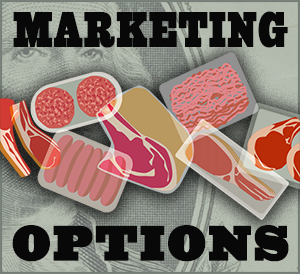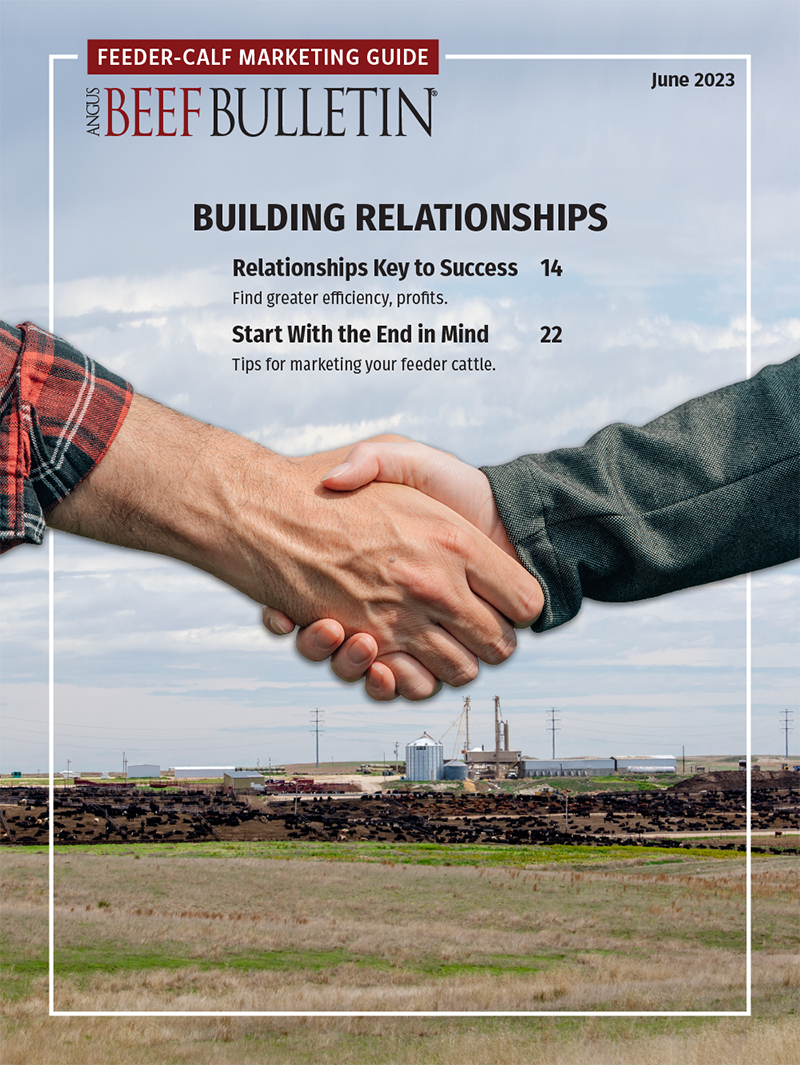
Direct Marketing Opportunities
Considerations offered for those direct-marketing grass-finished beef.

There are many marketing opportunities today in the beef business, including various branded programs that pay premiums for cattle raised or fed a certain way. One of these options is grass-fed or grass-finished beef.
Rick Machen, professor and Paul Genho Endowed Chair in Ranch Management at the King Ranch Institute for Ranch Management and Texas A&M–Kingsville, has worked with several small- to mid-size grass-fed producers and hosted the annual Texas A&M Grass-fed Beef Conference. He says the key to grass-fed beef production is sustainable quantity and quality of forage to grow and finish cattle in a timely manner. Periods of forage dormancy and limited availability often result in cattle being 24-28 months old before they get to a finished harvest weight and desired level of fatness.
Producers who want to go the route of grass-finishing need to make sure they are paid enough for their end product to justify keeping the animals longer with more time and feed invested in them. Some grass-fed operations may have portions of three calf crops on the farm at the same time — baby calves, yearlings and finishing animals.
“It’s important to understand the value of time and the value of forage. As age at harvest increases, so does the amount of total forage required, and cost of production,” says Machen.
If pasture availability is fixed, moving from traditional cow-calf production, with calves sold or transferred at weaning, to grass-finishing beef requires a significant reduction in cow inventory to have enough forage for the grow-finish operation.
“The additional forage required by growing/finishing animals could be used by cows. The economic tradeoff between fewer cows and marketing grass-fed beef should be considered,” says Machen.
He points out that producers are not solely focused on profitability. Resource stewardship, low-stress animal management, sustainability and the ability to move beef from their farm or ranch directly to the consumer are also important to them.
One option is cooperating with an already existing branded-beef product, raising cattle for an established grass-fed or natural market as a cooperating grower/producer.
“You could see how that goes, and how long it takes to produce animals to those specs, and how your forage shapes up for this program. I recommend doing that with a portion of the calf crop at first, selling the majority through traditional markets while testing the waters. In many branded programs, cooperating growers are paid a premium over what those calves are worth as feeder cattle at weaning,” he says.
If the premium is enough to make up the difference, it may work.
If a person wants to direct-market their own beef, one of the greatest challenges is finding a packer who will harvest and package the meat to certain specifications. Freight is another consideration. To haul cattle much farther than the routine marketplace can jeopardize profitability, he warns. You must consider the cost of getting them there.
“Most commercial cattlemen sell calves at weaning. This is the lowest-risk, least-involved marketing approach. Contrast that with selling beef direct to a consumer, and all the tasks performed by people in the middle when you just sell calves — stocker operators, feedyards, packing plants, wholesalers, retailers, etc. People who decide to direct-market their own beef often underestimate the time required, and the additional pieces of that puzzle,” he says.
Inventory becomes another management challenge. Unless you can sell whole carcasses, halves or quarters directly from the processor to the consumer, frozen storage space is needed. People also need to realize that not all parts of the beef carcass will sell at the same pace.
“The middle meats (rib, loin and tenderloin) generally move quickly, but the majority of the carcass weight is on the ends — the chuck and round. The novice starts into business, gets the cattle harvested and processed, sells the steaks and then realizes the freezer is full of less-preferred cuts that move at a slower pace,” he explains.
You need a plan for marketing everything.
Editor’s note: Heather Smith Thomas is a cattlewoman and freelance writer from Salmon, Idaho.



